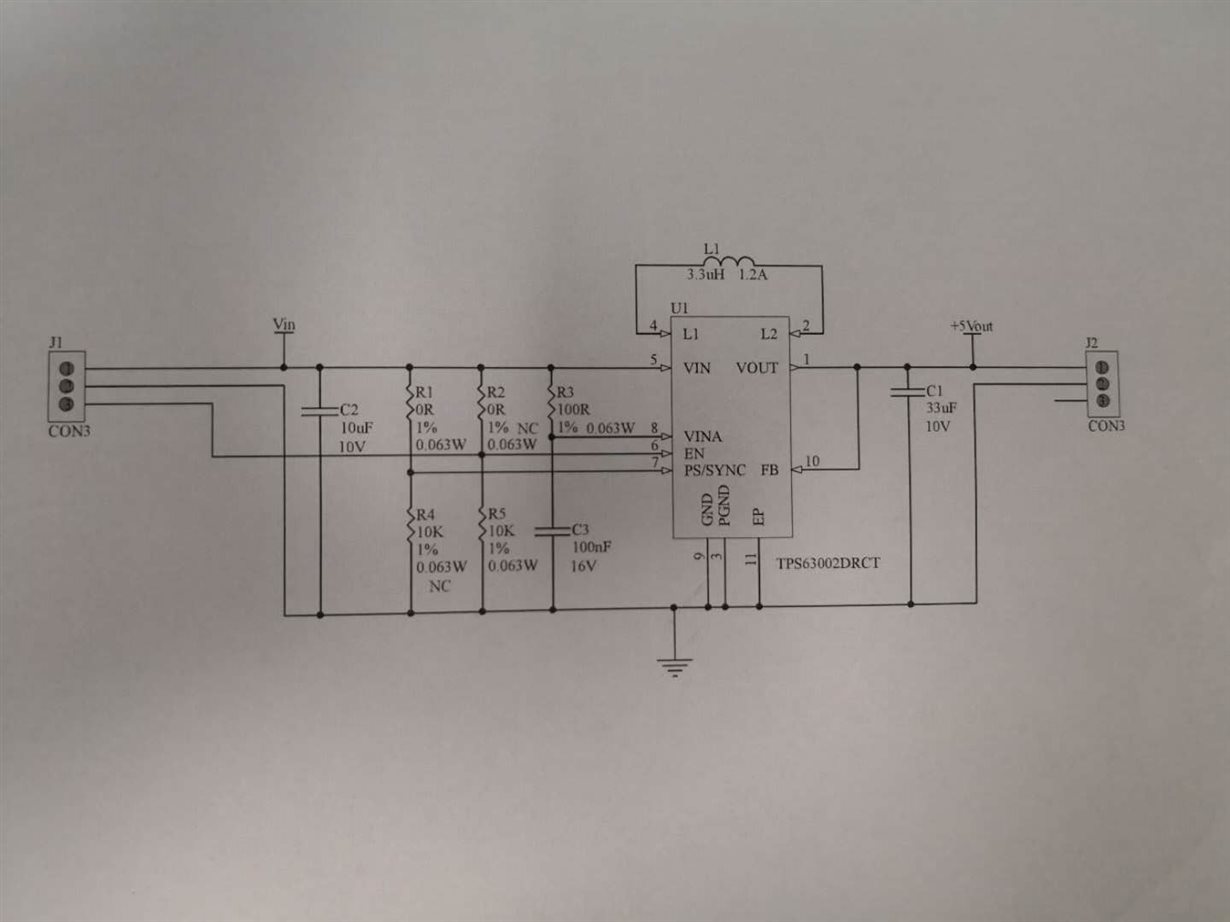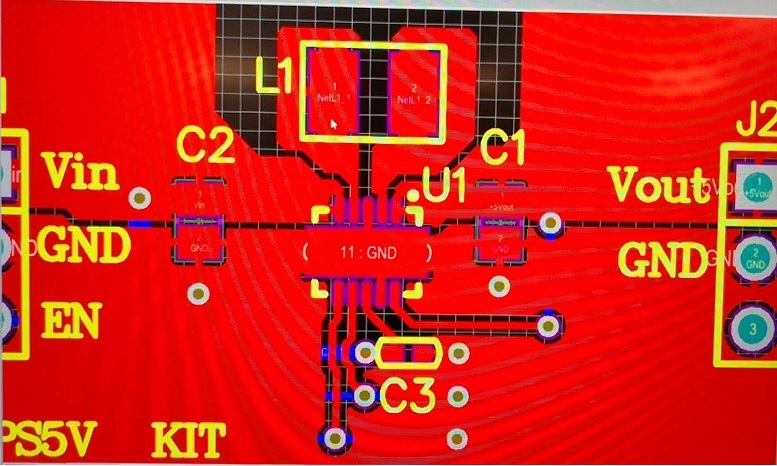Other Parts Discussed in Thread: TPS63000
Tool/software: WEBENCH® Design Tools
Hi All,
I used TPS63002 to design the input voltage 4.75v~5.25v output voltage 5V Current 1 A circuit, the schematic diagram is as follows:
The test diagram is as follows:Output no-load, first to input and then start en, the figure on the current is input current, how to reduce the start-up current, Thanks.




